Use this nursing care plan and management guide to help care for patients with gastroenteritis. Enhance your understanding of nursing assessment, interventions, goals, and nursing diagnosis, all specifically tailored to address the unique needs of individuals facing gastroenteritis. This guide equips you with the necessary information to provide effective and specialized care to patients dealing with gastroenteritis.
What is Gastroenteritis?
Gastroenteritis (also known as Food Poisoning; Stomach Flu; Traveler’s Diarrhea ) is the inflammation of the lining of the stomach and small and large intestines. The most common cause of this disease is infection obtained from consuming food or water. A variety of bacteria, viruses, and parasites are associated with gastroenteritis. Viral gastroenteritis also called stomach flu is a very contagious form of this disease. Food-borne gastroenteritis or food poisoning is associated with bacteria strains such as Escherichia coli, Clostridium, Campylobacter, and salmonella. The ingestion of foods contaminated with chemicals (lead, mercury, arsenic) or the ingestion of poisonous species of mushrooms or plants or contaminated fish or shellfish can also result in gastroenteritis. Symptoms of this disease include fever, anorexia, nausea, vomiting, diarrhea, and abdominal discomfort. The treatment is symptomatic, although cases of bacterial and parasitic infections require antibiotic therapy.
Nursing Care Plans and Management
The nursing care plan goals for patients with gastroenteritis include preventing dehydration by promoting adequate fluid and electrolyte intake, managing symptoms such as nausea and diarrhea, and preventing the spread of infection to others. In addition, the nursing care plan should focus on educating the patient on proper hygiene and food handling practices to prevent future episodes of gastroenteritis. This care plan for gastroenteritis focuses on the initial management in a non-acute care setting.
Nursing Problem Priorities
The following are the nursing priorities for patients with gastroenteritis:
- Manage dehydration and electrolyte imbalances.
- Alleviate symptoms of nausea, vomiting, and diarrhea.
- Prevent further spread of infection and transmission to others.
- Provide dietary recommendations and guidance for fluid intake.
- Monitor for complications, such as severe dehydration or bacterial infection.
- Educate patients on proper hygiene practices and handwashing.
- Offer supportive care to aid in recovery and symptom relief.
- Administer appropriate medications, if necessary.
- Schedule follow-up appointments for monitoring and assessment of progress.
- Collaborate with healthcare professionals for coordinated care and management.
Nursing Diagnosis
Following a thorough assessment, a nursing diagnosis is formulated to specifically address the challenges associated with gastroenteritis based on the nurse’s clinical judgment and understanding of the patient’s unique health condition. While nursing diagnoses serve as a framework for organizing care, their usefulness may vary in different clinical situations. In real-life clinical settings, it is important to note that the use of specific nursing diagnostic labels may not be as prominent or commonly utilized as other components of the care plan. It is ultimately the nurse’s clinical expertise and judgment that shape the care plan to meet the unique needs of each patient, prioritizing their health concerns and priorities.
Nursing Goals
Goals and expected outcomes may include:
- The client will have a negative stool culture.
- The client will pass soft, formed stool no more than 3 x a day.
- The client will verbalize understanding of the causes of gastroenteritis, mode of transmission, and management of symptoms.
- The client will have an increased nutritional intake and an absence of nausea and vomiting.
Nursing Interventions and Actions
Therapeutic interventions and nursing actions for patients with gastroenteritis may include:
1. Managing Diarrhea and Restoring Normal Function
Diarrhea is a common symptom of acute gastroenteritis caused by bacterial, viral, or parasitic infections because these microorganisms can damage the lining of the digestive tract and lead to inflammation, which can cause fluid and electrolytes to leak from the body. This results in loose, watery stools that can lead to dehydration if not treated promptly.
Ask the client about a recent history of drinking contaminated water, eating food inadequately cooked, and ingestion of unpasteurized dairy products:
Eating contaminated foods or drinking contaminated water may predispose the client to intestinal infection.
Evaluate the pattern of defecation.
The defecation pattern will promote immediate treatment.
Assess for abdominal pain, abdominal cramping, hyperactive bowel sounds, frequency, urgency, and loose stools.
These assessment findings are commonly connected with diarrhea. If gastroenteritis involves the large intestine, the colon is not able to absorb water and the client’s stool is very watery.
Submit the client’s stool for culture.
A culture is a test to detect which causative organisms cause an infection.
Teach the client about the importance of hand washing after each bowel movement and before preparing food for others.
Hands that are contaminated may easily spread the bacteria to utensils and surfaces used in food preparation hence hand washing after each bowel movement is the most efficient way to prevent the transmission of infection to others.
Educate the client about perianal care after each bowel movement.
The anal area should be gently cleaned properly after a bowel movement to prevent skin irritation and transmission of microorganisms.
Encourage increase fluid intake of 1.5 to 2.5 liters/24 hours plus 200 ml for each loose stool in adults unless contraindicated.
Increased fluid intake replaces fluid lost in liquid stools.
Encourage the client to restrict the intake of caffeine, milk, and dairy products.
These food items can irritate the lining of the stomach, hence may worsen diarrhea.
Encourage the client to eat foods rich in potassium.
When a client experience diarrhea, the stomach contents which are high in potassium get flushed out of the gastrointestinal tract into the stool and out of the body, resulting in hypokalemia.
Administer antidiarrheal medications as prescribed.
Bismuth salts, kaolin, and pectin which are adsorbent antidiarrheals are commonly used for treating the diarrhea of gastroenteritis. These drugs coat the intestinal wall and absorb bacterial toxins.
2. Preventing Dehydration
One of the primary concerns in managing gastroenteritis is preventing dehydration, as excessive fluid loss from vomiting and diarrhea can quickly lead to a dangerous imbalance in the body’s fluid levels. Dehydration can be especially problematic for certain populations, such as young children, older adults, and individuals with weakened immune systems. Therefore, it is crucial to take proactive measures to prevent dehydration in patients with gastroenteritis.
Assess the client’s skin turgor and mucous membranes for signs of dehydration.
A loss of interstitial fluid causes the loss of skin turgor. Assessment of skin turgor in adults is less accurate since their skin normally loses its elasticity. Therefore the skin turgor assessed over the sternum in the forehead is best. Several longitudinal furrows and coating may be noted along the tongue.
Assess the volume and frequency of vomiting.
Vomiting is associated with fluid loss.
Assess the consistency and number of bowel movements.
Gastroenteritis is associated with an increased frequency of very loose or watery bowel movements. The inflammation in the large intestine limits the colon‘s ability to absorb water, leading to fluid volume deficit.
Assess the color and amount of urine.
A decrease in urine volume and concentrated urine, as evidenced by darker urine color, denotes fluid volume deficit.
Assess the client’s PR and BP.
A reduction in circulating blood volume can cause hypotension and tachycardia. The change in HR is a compensatory mechanism to maintain cardiac output. Usually, the pulse is weak and may be irregular if electrolyte imbalance also occurs. Hypotension is evident in fluid volume deficit.
Assess the client’s temperature.
Fever that occurs with gastroenteritis increases fluid loss through perspiration and increased respiration.
Monitor BP for orthostatic changes (changes seen when changing from a supine to a standing position).
Postural hypotension is a common manifestation of fluid loss. The incidence increase with age. Note the following orthostatic hypotension significances:
- Greater than 10 mm Hg: circulating blood volume decreases by 20%.
- Greater than 20 to 30 mm Hg drop: circulating blood volume is decreased by 40%.
Instruct the client to monitor weight daily and consistently with the same scale, preferably at the same time of the day, and wearing the same amount of clothing.
The client with gastroenteritis may experience weight loss from fluid loss with diarrhea and vomiting. Instruction facilitates accurate measurement and assessment provides useful data for comparisons and helps in following trends.
Encourage regular oral hygiene.
A fluid volume deficit can cause a dry, sticky mouth. Attention to mouth care promotes interest in drinking and reduces the discomfort of dry mucous membranes.
Encourage increase fluid intake of 1.5 to 2.5 liters/24 hours plus 200 ml for each loose stool in adults unless contraindicated.
Increased fluid intake replaces fluid lost in the liquid stool. Being creative in selecting fluid sources (e.g., flavored gelatin, frozen juice bars, sports drink) can facilitate fluid replacement. Oral hydrating solutions (e.g., Rehydrate) can be considered as needed.
For the client who is unable to take sufficient oral fluids, consider the need for hospitalization and the administration of parental fluids as ordered.
Fluids are needed to maintain hydration status. Determining the type and amount of fluid to be replaced and the infusion rates will vary depending on the client’s clinical status.
Administer antiemetic medications as ordered
These drugs will reduce vomiting and the risk of fluid volume deficit.
3. Promoting Adequate Nutritional Balance
Patients with acute gastroenteritis may experience imbalanced nutrition due to decreased appetite, nausea, vomiting, and diarrhea. These symptoms can cause reduced food intake and nutrient absorption, leading to a negative balance of energy and nutrients that the body needs for normal function and repair. Additionally, if the symptoms persist, patients may not be able to maintain their usual food intake, leading to further nutrient deficiencies.
Measure client weight.
This will accurately monitor the response to therapy.
Monitor and record the number of vomiting, amount, and frequency.
These data will help in initiating nursing actions and subsequent treatment.
Monitor the client’s food intake.
To determine the amount of food that is consumed.
Provide a diverse diet according to his needs.
This will stimulate the appetite of the client.
Provide parenteral fluids, as ordered.
To ensure adequate fluid and electrolyte levels.
Refer to a dietitian if indicated.
Collaboration with the dietician in order to guide the client about proper nutrition.
4. Initiating Patient Education and Health Teachings
There may be a lack of knowledge among patients with acute gastroenteritis due to several reasons, including limited access to healthcare information, a lack of understanding about the causes and symptoms of the condition, and the perception that diarrhea is a common and self-limiting ailment that does not require medical attention. Additionally, different pathogens can cause acute gastroenteritis, and their symptoms can vary, making it difficult for patients to identify the specific cause of their illness. While medical treatment is crucial in managing gastroenteritis, patient education and health teachings play a vital role in improving outcomes and preventing further complications.
Assess the client’s knowledge of gastroenteritis, its mode of transmission, and its treatment.
Clients who experience diarrhea and vomiting may not correlate the symptoms with an acquired intestinal infection. The client may not realize the risk of transmitting the infection to others.
Assess the client’s knowledge of safe food preparation and storage.
The client may not understand the relationship of gastroenteritis to the consumption of inadequately cooked food, food contaminated with bacteria during preparation, and foods that are not maintained at appropriate temperatures.
Determine the client’s usual methods of managing diarrhea or vomiting.
An effective teaching plan will include methods of symptom management that the client has found helpful in the past.
Teach the client about symptoms that must be reported immediately to the healthcare provider such as black tarry stools, blood or pus in the feces, fever greater than 38.3° C (101° F), increased dizziness, lightheadedness, or thirst, and vomiting or diarrhea that gets worse or continues for more than five days (3 days for the older adult or immunocompromised client:
The client needs to understand that changes in the stool, high fever, persistent vomiting, and diarrhea may indicate intestinal bleeding and worsen the infection. Signs of fluid volume deficit and the inability to replace fluids by the oral route may require hospitalization for fluid replacement.
Educate the client and the family about the causes and treatments for gastroenteritis.
Knowledge about the possible cause of this episode of gastroenteritis will help the client initiate to prevent future episodes. The client needs to recognize that the use of antibiotics is controversial in managing diarrhea. The client needs to understand the importance of fluid replacement.
Educate the client about the importance of hand washing after toileting and perianal hygiene and before preparing food for others.
Good hand washing will prevent the spread of infectious agents.
Educate the client about food preparation and storage methods to reduce contamination by microorganisms.
Ground meats are the most common source of foodborne pathogens. These meats should be cooked to an internal temperature of 160°F and should have no evidence of pink color. Raw meats should be kept separate from other ready-to-eat foods. All utensils and surfaces that have been in contact with the raw meat need to be washed with hot, soapy water. Raw fruits and vegetables must be washed before eating if they will not be cooked. Only pasteurized milk, fruit juices, and ciders should be consumed. Bacteria contamination or growth is more likely to occur in foods that are not maintained at appropriate temperatures until eaten.
5. Administering Medications and Providing Pharmacologic Support
It is important for healthcare professionals to carefully assess each patient with gastroenteritis, considering the severity of symptoms, the presence of complications, and the individual’s overall health status. Based on this evaluation, appropriate medications and pharmacologic support can be provided to optimize patient care and facilitate a swift recovery. The primary goals of pharmacologic intervention in these patients are to alleviate symptoms, control the infection if present, and prevent complications.
1. Antiemetics. Used to control nausea and vomiting.
- Ondansetron. Helps alleviate nausea and vomiting by blocking certain receptors in the brain and gastrointestinal tract.
- Promethazine. Works as an antihistamine and helps relieve nausea and vomiting symptoms.
- Metoclopramide. Helps reduce nausea and vomiting by increasing the movement of the stomach and intestines.
2. Antidiarrheals. Used to reduce the frequency and severity of diarrhea.
- Loperamide. Slows down bowel movements and helps control diarrhea.
- Bismuth subsalicylate. Helps relieve diarrhea and may also have some antimicrobial effects.
3. Antibiotics. Prescribed in cases of bacterial gastroenteritis to treat the underlying infection.
- Ciprofloxacin. A fluoroquinolone antibiotic effective against many bacterial pathogens.
- Azithromycin. A macrolide antibiotic that targets certain bacterial species causing gastroenteritis.
4. Probiotics. Used to restore the natural balance of gut bacteria.
- Lactobacillus acidophilus. Helps promote the growth of beneficial bacteria in the gut.
5. Electrolyte solutions. Used to rehydrate and restore electrolyte balance.
- Oral rehydration solutions (ORS). Contain electrolytes and glucose to replace lost fluids and prevent dehydration.
- Intravenous fluids. Administered in severe cases of dehydration when oral intake is not possible.
6. Monitoring Diagnostic and Laboratory Procedures
Monitoring the results of diagnostic and laboratory procedures is crucial in patients with gastroenteritis to guide appropriate treatment and ensure optimal patient care. It’s important to note that the specific tests and procedures ordered may vary depending on the patient’s symptoms, medical history, and the suspected cause of gastroenteritis. The healthcare provider will determine the most appropriate diagnostic approach for each individual case.
1. Stool Culture and Examination
If a stool culture or examination reveals the presence of bacterial pathogens or parasites, the specific organism identified helps guide targeted therapy. Monitoring subsequent cultures or examinations can assess the effectiveness of treatment and determine if the infection has been cleared.
2. Viral Testing
For patients with viral gastroenteritis, monitoring viral test results can confirm the presence of a specific virus, such as norovirus or rotavirus. This information can guide infection control measures in healthcare settings and help manage outbreaks.
3. Complete Blood Count (CBC)
Monitoring the CBC helps evaluate the patient’s response to treatment. Decreasing white blood cell (WBC) counts may indicate resolution of infection, while persistently elevated WBC counts could suggest ongoing inflammation or the need for further investigation.
4. Electrolyte Panel
Regular monitoring of electrolyte levels is essential, especially in patients with severe gastroenteritis or dehydration. Abnormal electrolyte levels, such as low sodium or potassium, may require correction through fluid replacement or targeted interventions.
5. Kidney Function Tests
Continued monitoring of kidney function tests, such as BUN and creatinine, can assess the impact of dehydration on renal function. Improvements in kidney function values indicate rehydration and effective management of gastroenteritis.
6. Liver Function Tests
Monitoring liver function tests is crucial if liver inflammation or injury is suspected. Serial measurements of liver enzymes, such as ALT and AST, can help evaluate the resolution of liver involvement and guide further management if necessary.
7. Clinical Assessment
Alongside laboratory and diagnostic results, ongoing clinical assessment plays a vital role in monitoring patients with gastroenteritis. Monitoring symptoms such as diarrhea frequency, vomiting, abdominal pain, and general well-being helps gauge the patient’s response to treatment and identify any signs of complications.
7. Assessing and Monitoring for Potential Complications
Assessing and monitoring for potential complications is an important aspect of managing patients with gastroenteritis. While most cases of gastroenteritis resolve without complications, certain individuals may be at higher risk or develop complications. Early recognition of potential complications allows for prompt intervention and appropriate management. It’s essential for healthcare providers to maintain regular follow-up visits or consultations to assess the patient’s progress, reevaluate symptoms, and address any emerging concerns or complications.
1. Assess for signs and symptoms of dehydration.
One of the primary complications of gastroenteritis is dehydration, which can occur due to excessive fluid loss from vomiting and diarrhea. Monitoring hydration status through clinical assessment, such as evaluating skin turgor, mucous membranes, and urine output, is essential. Laboratory tests, including electrolyte levels and kidney function tests, can help identify electrolyte imbalances and assess renal function.
2. Monitor patient’s electrolyte Imbalances.
Severe and prolonged diarrhea and vomiting can disrupt the balance of electrolytes in the body, leading to imbalances such as hyponatremia (low sodium) or hypokalemia (low potassium). Regular monitoring of electrolyte levels through laboratory tests can guide appropriate interventions and prevent complications associated with electrolyte disturbances.
3. Monitor patient’s weight daily.
In cases of prolonged or severe gastroenteritis, malnutrition can occur due to inadequate nutrient absorption and decreased oral intake. Monitoring weight loss, assessing dietary intake, and considering nutritional supplementation or support may be necessary, especially in vulnerable populations such as children and older adults.
4. Monitor signs of secondary infections.
Gastroenteritis can weaken the immune system, making individuals more susceptible to secondary infections. Monitoring for signs of bacterial superinfection, such as worsening abdominal pain, high fever, or the persistence of symptoms despite appropriate treatment, is important. Additional diagnostic tests or cultures may be needed to identify secondary infections.
5. Monitor patient’s hemodynamic stability.
Severe cases of gastroenteritis can lead to hemodynamic instability, particularly in young children or those with compromised health. Monitoring vital signs, including blood pressure, heart rate, and perfusion indicators, can help identify signs of circulatory compromise or shock.
6. Monitor organ dysfunction.
Although rare, certain infections associated with gastroenteritis, such as certain strains of E. coli or certain viral infections, can lead to organ dysfunction. Monitoring liver function tests, renal function, and other organ-specific markers may be necessary to identify any signs of organ involvement or complications.
7. Monitor patient’s neurological status.
Some viral gastroenteritis infections, such as rotavirus, may cause neurological complications, including seizures or encephalopathy. Monitoring for any neurological symptoms or changes in mental status is crucial, especially in young children.
Recommended Resources
Recommended nursing diagnosis and nursing care plan books and resources.
Disclosure: Included below are affiliate links from Amazon at no additional cost from you. We may earn a small commission from your purchase. For more information, check out our privacy policy.
Ackley and Ladwig’s Nursing Diagnosis Handbook: An Evidence-Based Guide to Planning Care
We love this book because of its evidence-based approach to nursing interventions. This care plan handbook uses an easy, three-step system to guide you through client assessment, nursing diagnosis, and care planning. Includes step-by-step instructions showing how to implement care and evaluate outcomes, and help you build skills in diagnostic reasoning and critical thinking.

Nursing Care Plans – Nursing Diagnosis & Intervention (10th Edition)
Includes over two hundred care plans that reflect the most recent evidence-based guidelines. New to this edition are ICNP diagnoses, care plans on LGBTQ health issues, and on electrolytes and acid-base balance.

Nurse’s Pocket Guide: Diagnoses, Prioritized Interventions, and Rationales
Quick-reference tool includes all you need to identify the correct diagnoses for efficient patient care planning. The sixteenth edition includes the most recent nursing diagnoses and interventions and an alphabetized listing of nursing diagnoses covering more than 400 disorders.

Nursing Diagnosis Manual: Planning, Individualizing, and Documenting Client Care
Identify interventions to plan, individualize, and document care for more than 800 diseases and disorders. Only in the Nursing Diagnosis Manual will you find for each diagnosis subjectively and objectively – sample clinical applications, prioritized action/interventions with rationales – a documentation section, and much more!

All-in-One Nursing Care Planning Resource – E-Book: Medical-Surgical, Pediatric, Maternity, and Psychiatric-Mental Health
Includes over 100 care plans for medical-surgical, maternity/OB, pediatrics, and psychiatric and mental health. Interprofessional “patient problems” focus familiarizes you with how to speak to patients.

See also
Other recommended site resources for this nursing care plan:
- Nursing Care Plans (NCP): Ultimate Guide and Database MUST READ!
Over 150+ nursing care plans for different diseases and conditions. Includes our easy-to-follow guide on how to create nursing care plans from scratch. - Nursing Diagnosis Guide and List: All You Need to Know to Master Diagnosing
Our comprehensive guide on how to create and write diagnostic labels. Includes detailed nursing care plan guides for common nursing diagnostic labels.
More nursing care plans related to gastrointestinal disorders:
- Appendectomy
- Bowel Incontinence (Fecal Incontinence)
- Cholecystectomy
- Constipation
- Diarrhea Nursing Care Plan and Management
- Cholecystitis and Cholelithiasis
- Gastroenteritis
- Gastroesophageal Reflux Disease (GERD)
- Hemorrhoids
- Hepatitis
- Ileostomy & Colostomy
- Inflammatory Bowel Disease (IBD)
- Intussusception
- Liver Cirrhosis
- Nausea & Vomiting
- Pancreatitis
- Peritonitis
- Peptic Ulcer Disease
- Subtotal Gastrectomy
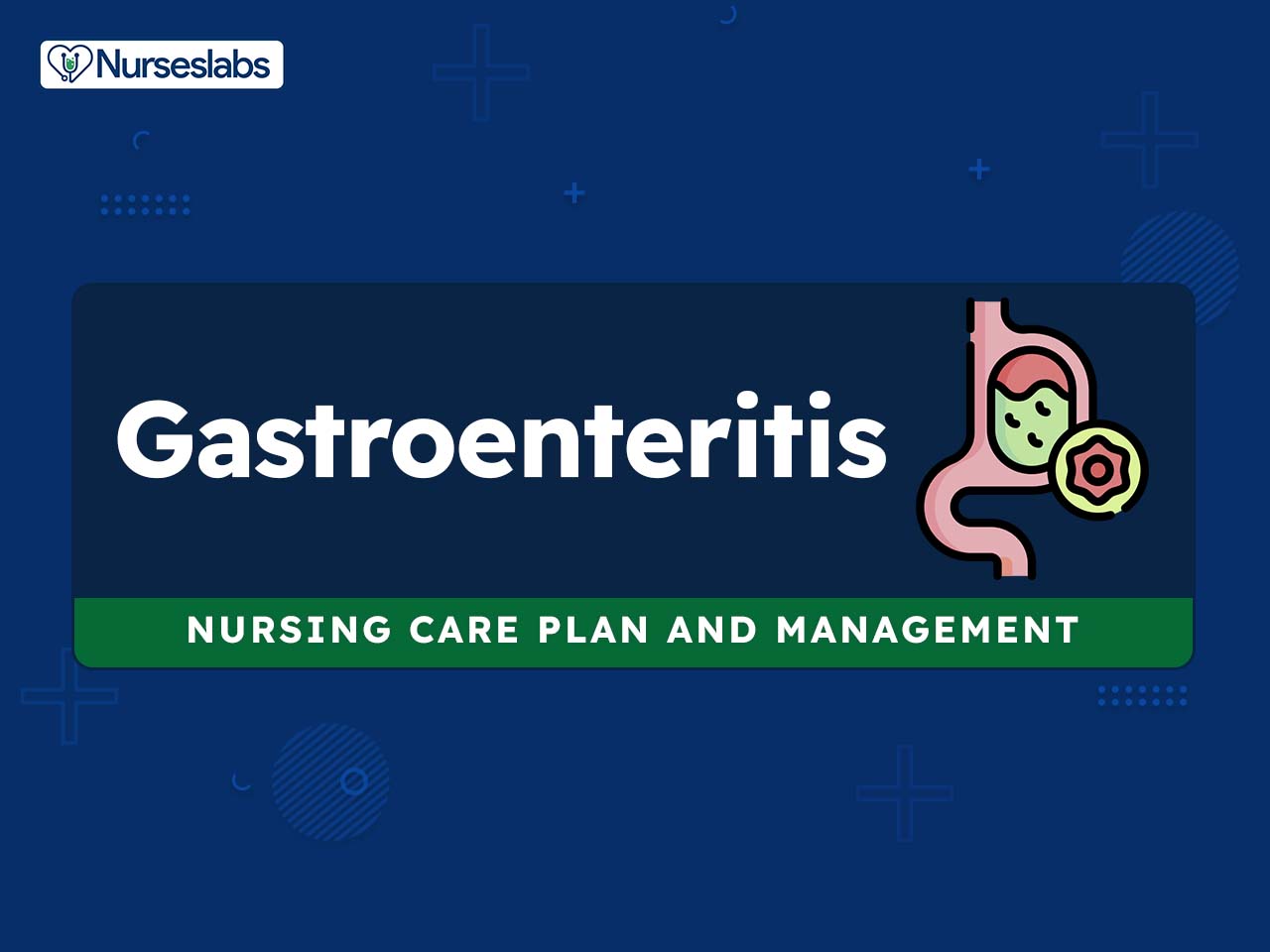




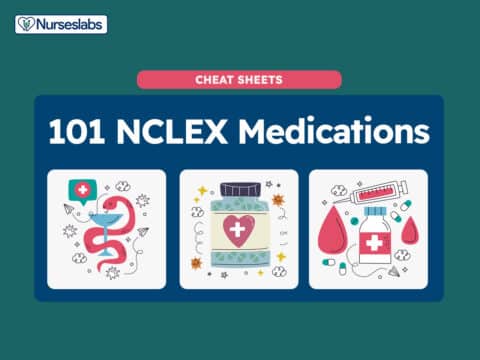



















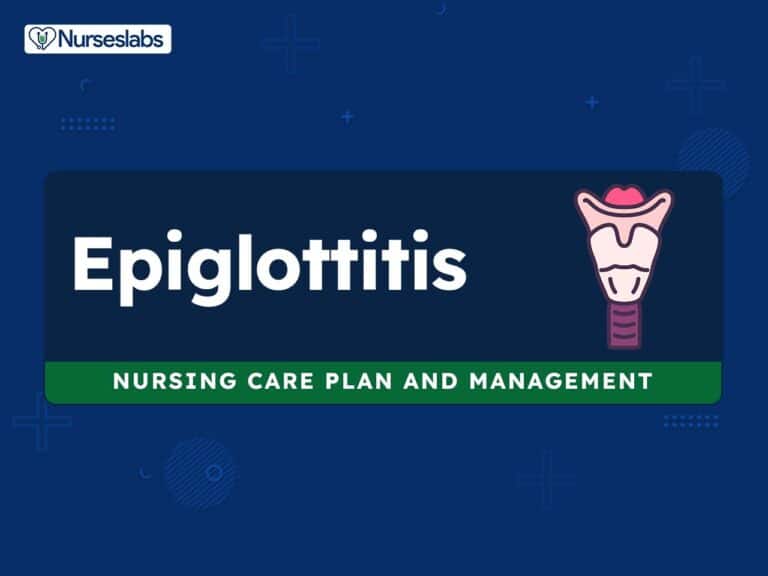

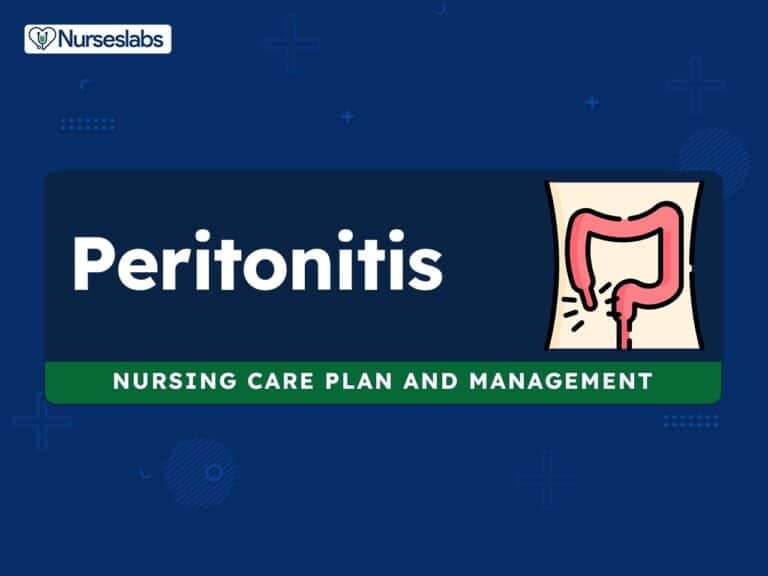
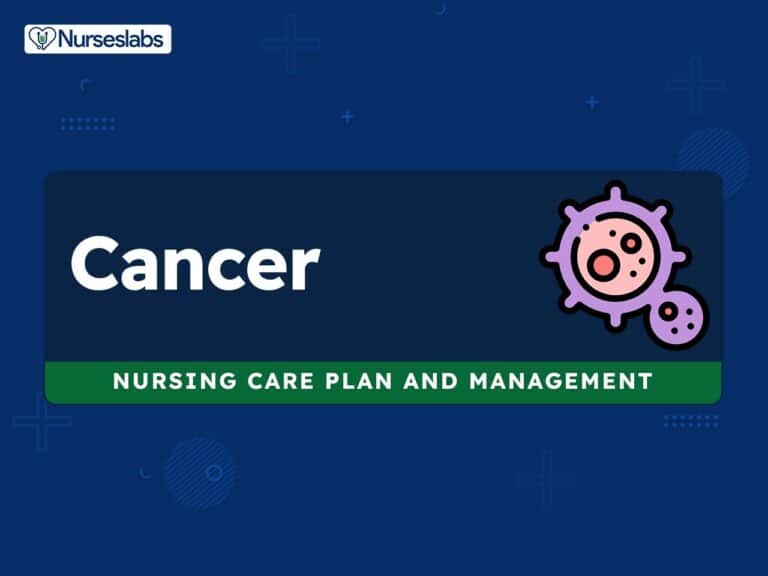
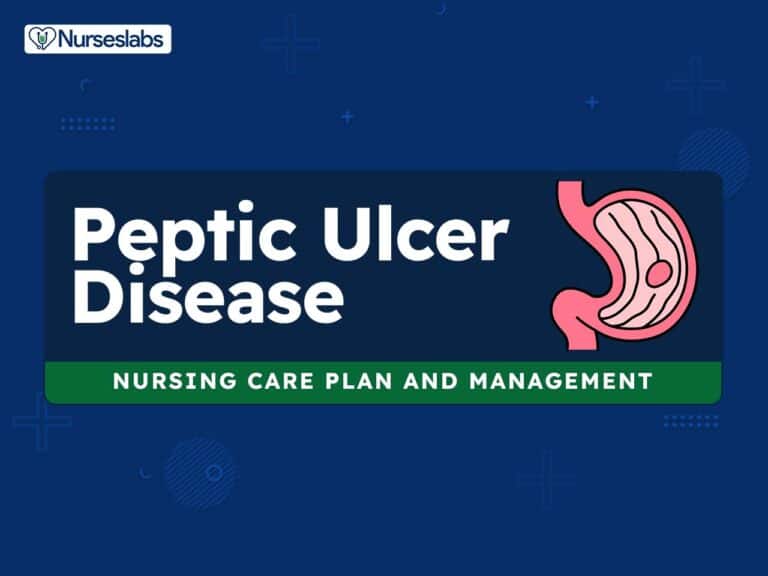
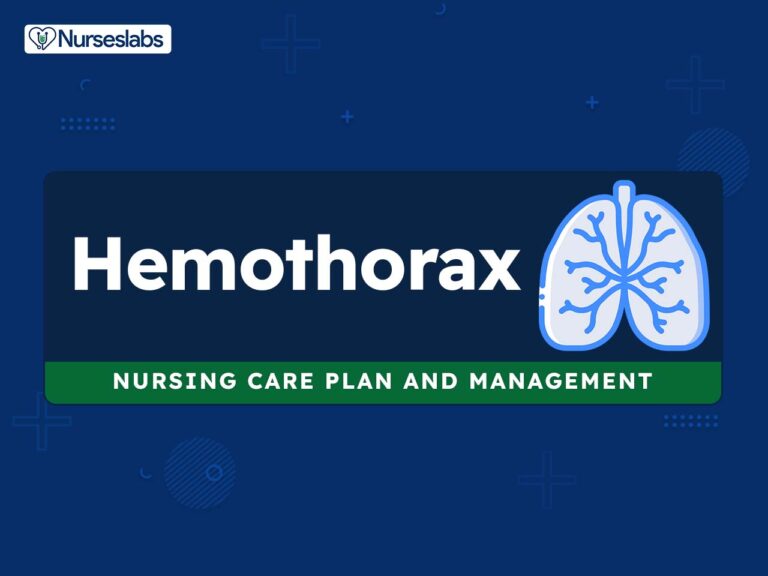
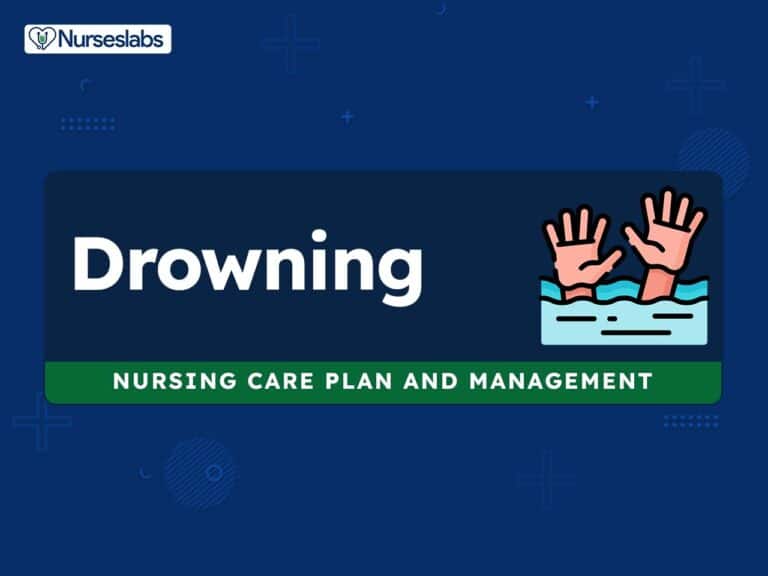
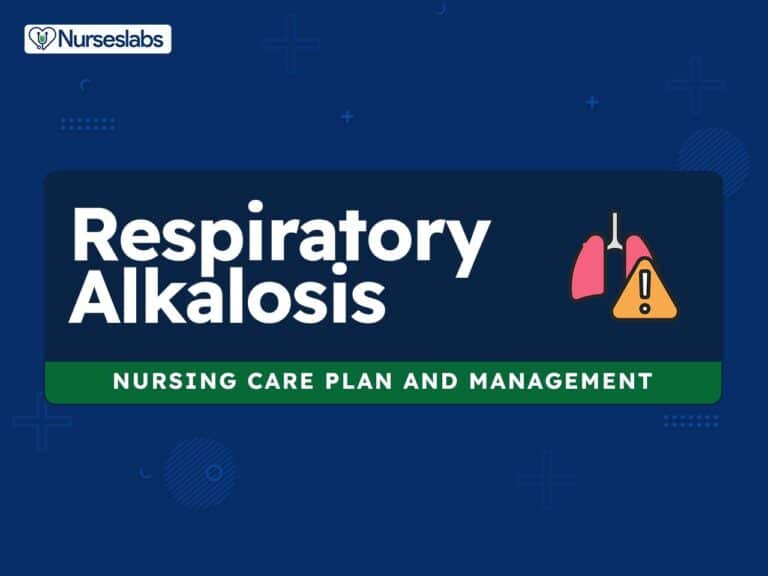
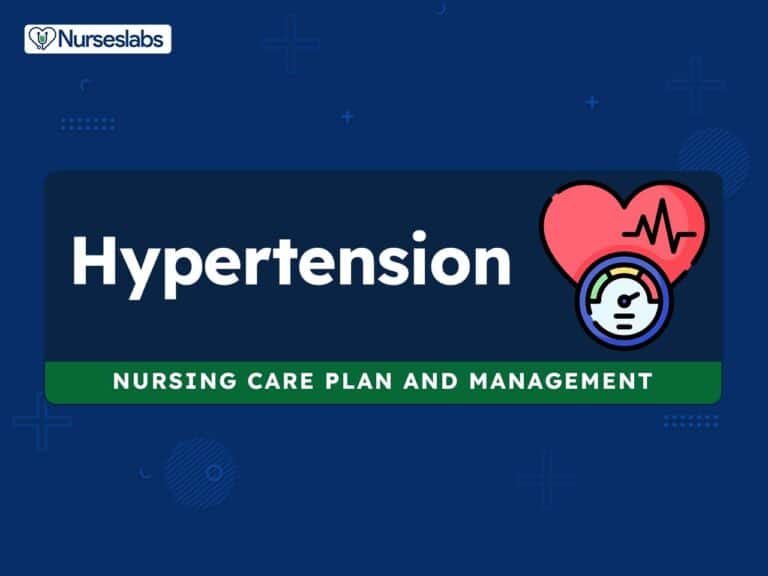
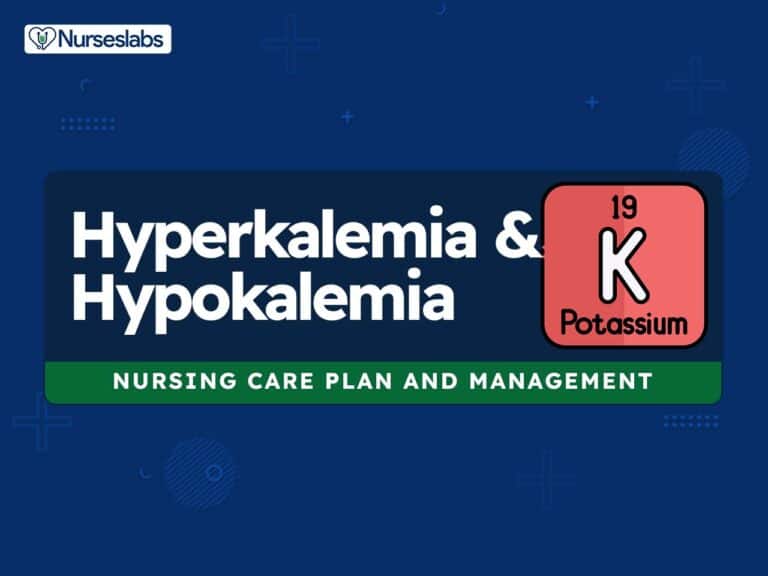
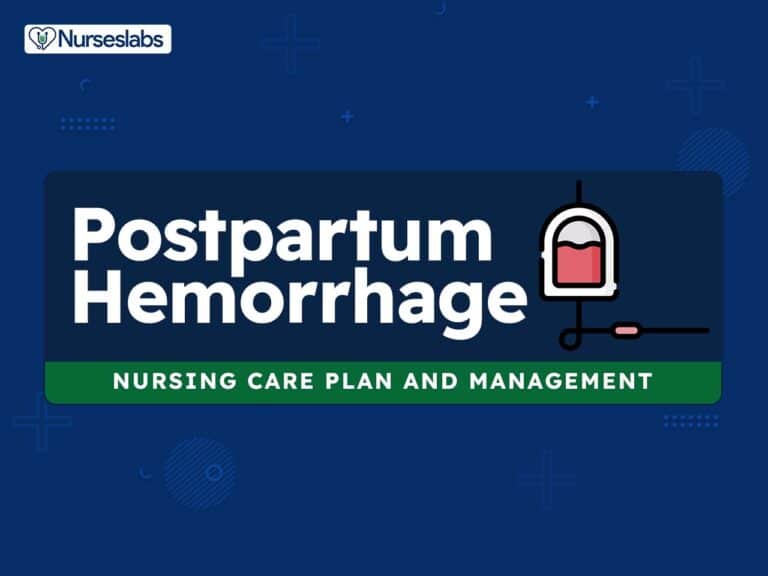
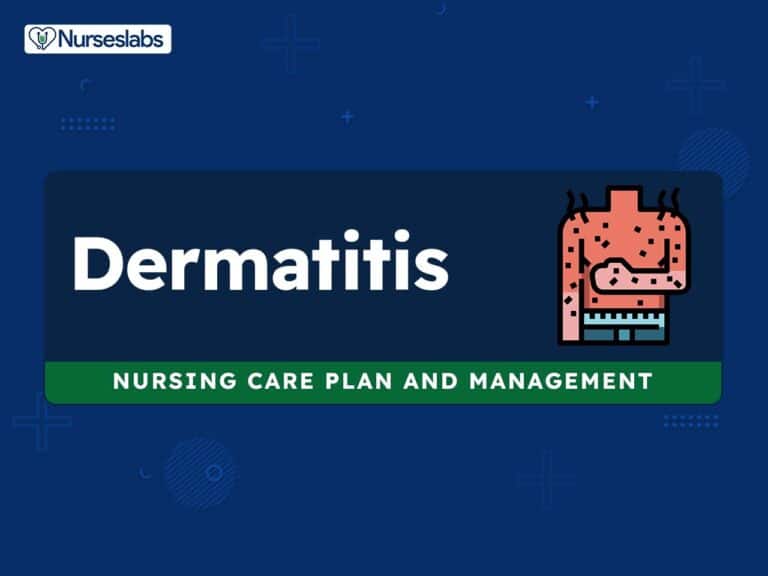
Leave a Comment